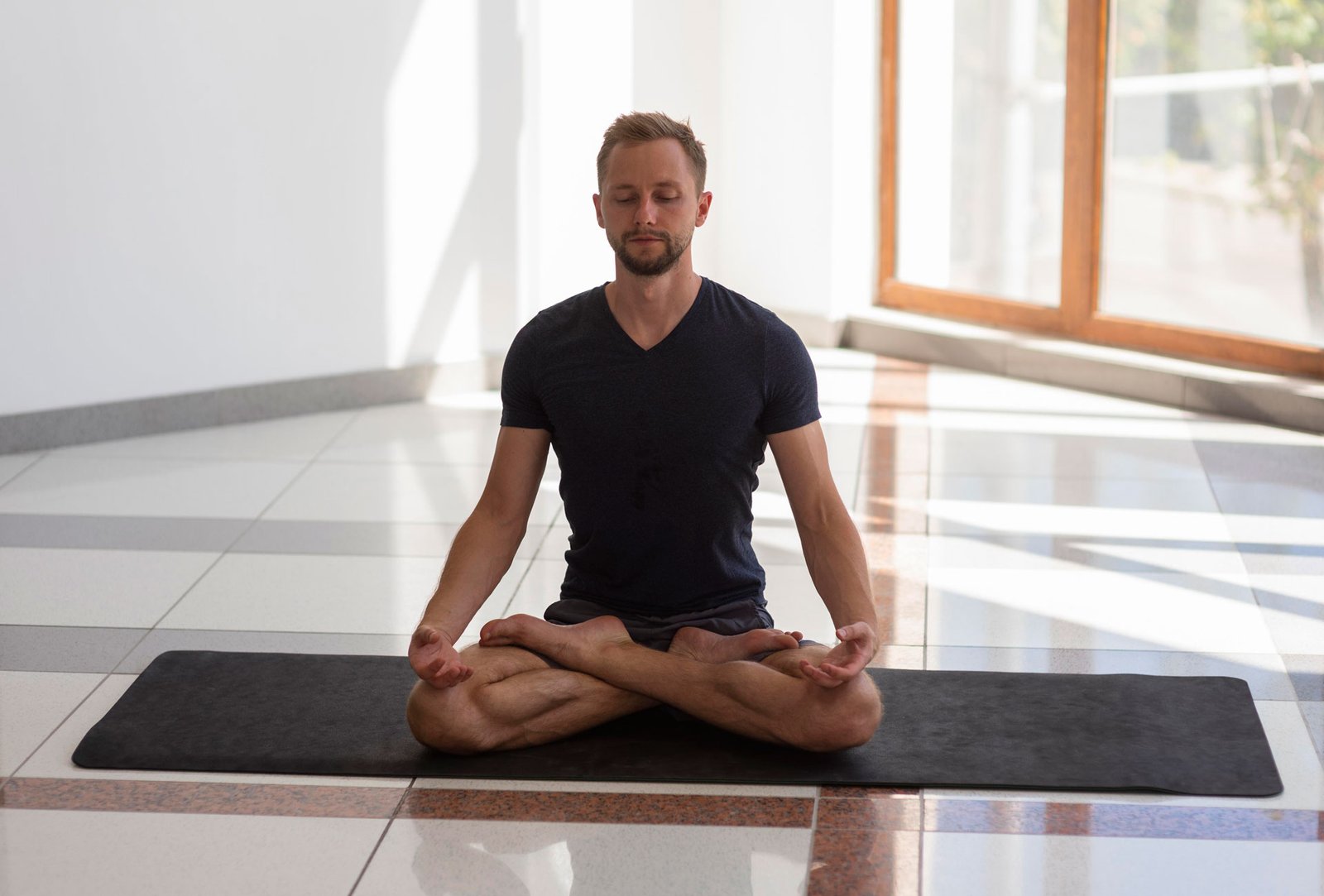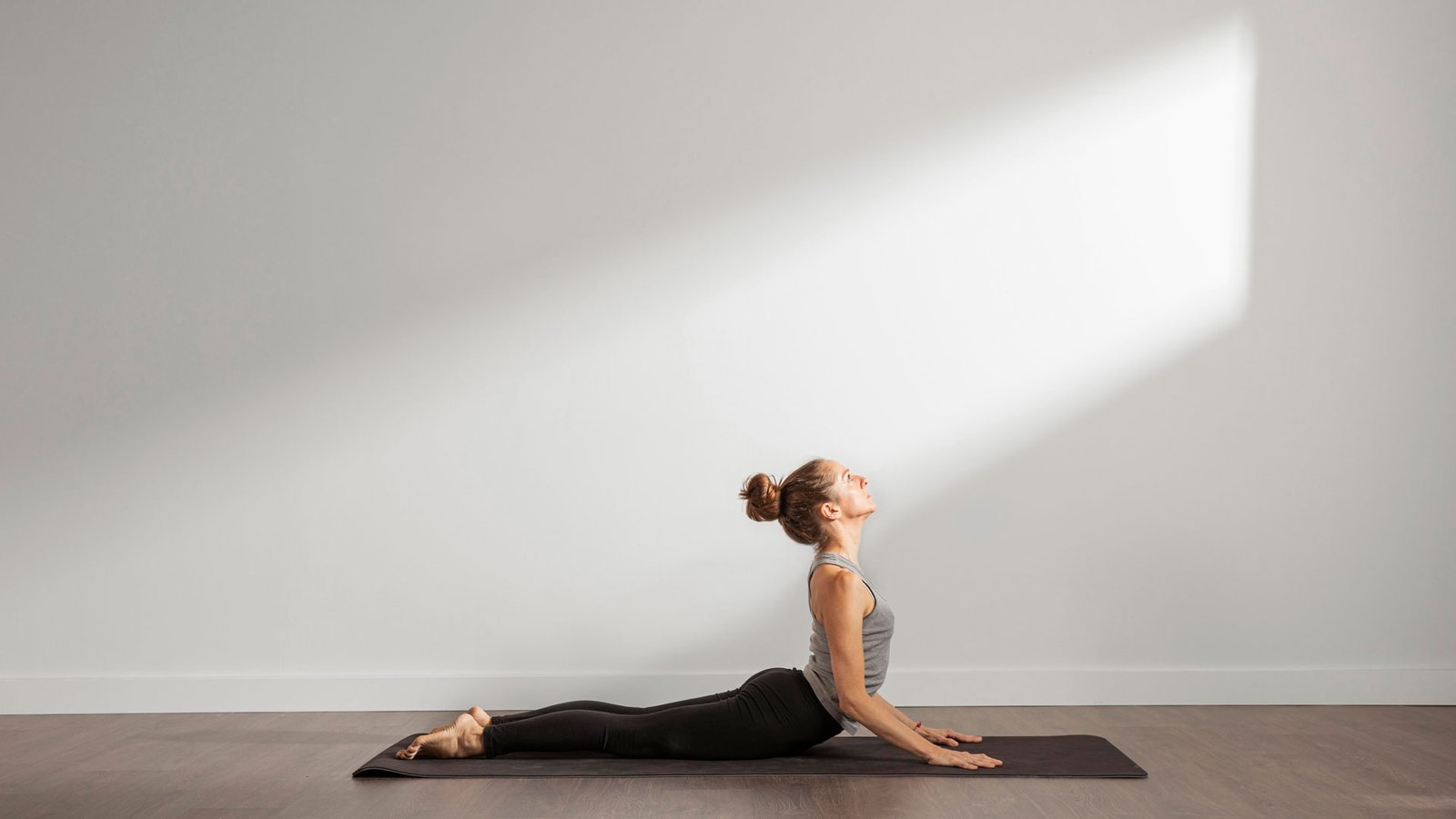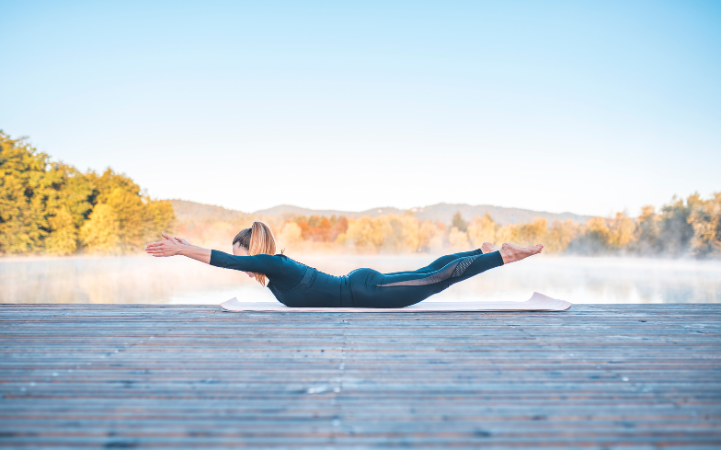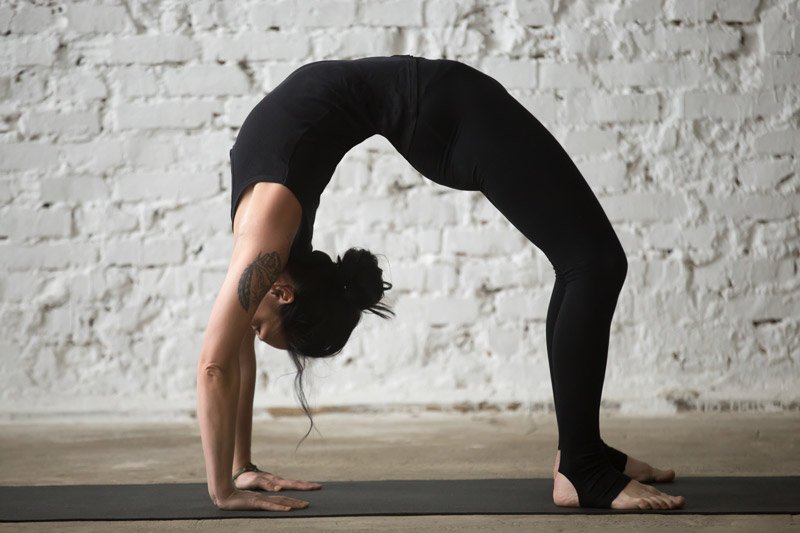Padmasana, or Lotus Pose, is one of the most recognized yoga postures, symbolizing peace, balance, and spiritual awakening. The word Padma means “lotus,” and the posture resembles the blossomed lotus flower. Known for its profound ability to stabilize the body and mind, Padmasana is a cornerstone in meditation and pranayama practices. It creates a firm, grounded foundation, allowing energy to flow freely throughout the body.
Steps to Practice Padmasana
- Starting Position: Sit on a yoga mat with your legs extended straight in front of you and your back straight.
- Bend One Leg: Bend your right knee and place your right foot on your left thigh, with the sole facing upward. The heel should rest close to your abdomen.
- Bend the Other Leg: Similarly, bend your left knee and place your left foot on your right thigh, with the sole facing upward.
- Adjust for Comfort: Ensure both knees are close to the ground and your spine remains erect.
- Rest Your Hands: Place your hands on your knees in Chin Mudra (thumb and index finger touching, palms facing upward) or another mudra of your choice.
- Focus Your Gaze: Close your eyes and fix your attention inward, focusing on your breath or a point of meditation.
- Hold the Pose: Stay in the posture for a duration that feels comfortable, starting with a few minutes and gradually increasing over time.
- Release the Pose: Straighten your legs gently and shake them out to release any tension.
Benefits of Padmasana
- Enhances Meditation: Provides a stable and comfortable base, improving focus and concentration during meditation.
- Improves Posture: Encourages an erect spine, promoting proper alignment and relieving back strain.
- Stimulates Energy Flow: Opens the hips and aligns the body, facilitating the flow of prana (life energy).
- Calms the Mind: Induces relaxation and reduces anxiety by creating a sense of grounding and stability.
- Strengthens Joints: Improves flexibility in the hips, knees, and ankles.
- Promotes Circulation: Enhances blood flow to the lower body, especially the pelvic region.
- Supports Digestion: Stimulates abdominal organs, aiding in digestion and metabolism.
- Balances the Chakras: Helps activate the Muladhara (Root) and Sahasrara (Crown) Chakras, fostering spiritual growth.
Tips for Practicing Padmasana
- Warm Up First: Stretch and loosen your hips and legs with preparatory poses like Baddha Konasana (Butterfly Pose) or Janu Sirsasana (Head-to-Knee Pose).
- Use Props: Sit on a cushion or folded blanket to elevate your hips and make the pose more accessible.
- Progress Gradually: If full Lotus Pose is challenging, start with Ardha Padmasana (Half Lotus Pose), placing only one foot on the opposite thigh.
- Focus on Alignment: Keep your back straight and shoulders relaxed to avoid slouching.
- Breathe Deeply: Maintain steady, deep breaths to enhance relaxation and mindfulness.
- Avoid Forcing: Never force your legs into the position; work within your body’s current flexibility limits.
Cautions and Contraindications
- Knee Injuries: Avoid the pose if you have any pain or injury in the knees, as the position places strain on the joint.
- Hip Tightness: If your hips are tight, practice preparatory poses before attempting Padmasana to avoid discomfort.
- Ankle Issues: Be cautious if you have ankle injuries or stiffness, as the pose may aggravate these conditions.
- Sciatica: Avoid Padmasana if you experience sciatic pain, as the seated position may increase pressure on the sciatic nerve.
- Pregnancy: Pregnant practitioners should avoid or modify the pose to avoid strain on the abdomen.
- Prolonged Sitting: Avoid sitting in the pose for extended periods initially; increase the duration gradually to prevent numbness or discomfort.
Padmasana is more than just a physical posture; it is a gateway to inner peace and self-awareness. Regular practice can improve flexibility, posture, and focus while fostering a calm and meditative state of mind. However, achieving the full expression of the pose requires patience, consistency, and mindfulness. By listening to your body and respecting its limitations, you can safely integrate Padmasana into your yoga routine, reaping its profound physical and spiritual benefits over time.






